Ansie van der Walt ✿ Listening to textiles in strange places
Through her writing, Garland perennial Ansie van der Walt ventures into foreign lands to discover the eternal fabric of life.
 After feeling like an outsider for most of my life, I’ve recently realised that is the reason I find being an expat easier than living in the same place for many years. As an expat, you are by definition the odd one out, the one that doesn’t belong. The newcomer. The weird one. Being the ‘other’ feels less personal, less of a judgement against who you are. It is easier to blame ‘not belonging’ on cultural differences and language barriers than on personal inadequacies, and in a way, it makes me feel like I do belong. As an expat, it is okay to be an outsider, an observer.
After feeling like an outsider for most of my life, I’ve recently realised that is the reason I find being an expat easier than living in the same place for many years. As an expat, you are by definition the odd one out, the one that doesn’t belong. The newcomer. The weird one. Being the ‘other’ feels less personal, less of a judgement against who you are. It is easier to blame ‘not belonging’ on cultural differences and language barriers than on personal inadequacies, and in a way, it makes me feel like I do belong. As an expat, it is okay to be an outsider, an observer.
Being a textile writer is an unusual occupation and I am often asked how it came about. This is how: being a stranger in a strange place. Textiles are recognisable. Known. Being a writer gives me an excuse to ask questions, to learn, to poke my nose in, to be curious and to look for things that are familiar and understandable.
I realised that I understand the language of textiles, fabrics, and threads. I hear them. I read them. I speak them. When I go to strange places, I look for the fabric. The clothes people wear, the way they dress and decorate their personal space. The art they make. The way they proclaim their affiliations. The way they celebrate, and the way they mourn. It is all fabric.
I also find that people are generous with fabric. They allow you in, to touch, to feel, to experience. Textiles allow people to share, to become familiar, and to be intimate without being creepy or invading each other’s personal space. It makes you feel like you belong.
I like all the metaphors of fabric and thread. The intertwining. The weaving. The threading. The being connected. And being the connector. In the fabric of life, we are all just threads. Sometimes we are unravelling, sometimes we are a loose thread, and sometimes we are a different colour, texture, or fibre as the rest, but we are all just threads.
I also like the metaphor of stitching or embroidering. A single thread must be attached to a needle and poked through the fabric and then pulled taught. That is the only way to make a pattern, to connect two pieces of fabric, and to create a masterpiece. As a single thread, you have to be fragile but fierce, poking your way in and through, and you have to create and experience the tension, the stretch. That is the only way to become part of the fabric.
I celebrate the single threads, the loners and the odd ones out. Be fierce – poke a hole, feel the tension, and create a fabulous design on the fabric of life.
✿
Ansie van der Walt is a South African-Australian textile writer and editor who after almost twenty years of expat living has recently settled in Adelaide, South Australia. She is a regular contributor to several international art and textile publications. She manages The Fabric Thread, a textile-travel platform where she focuses on cultural textiles, and textiles in fine art. You can find out more here: thefabricthread.com.
✿
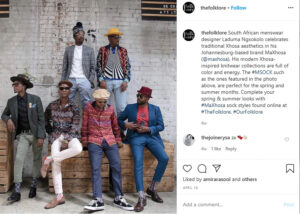 Stepping out: Africa Fashion Week Middle East - Ansie van der Walt talks to organisers of a new fashion festival in the UAE and profiles leading fashion designers from the region
Stepping out: Africa Fashion Week Middle East - Ansie van der Walt talks to organisers of a new fashion festival in the UAE and profiles leading fashion designers from the region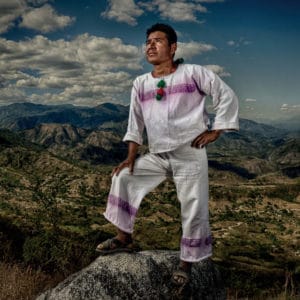 Woven histories of Chiapas and Oaxaca - Ansie van der Walt reviews books on textiles of Chiapas and Oaxaca
Woven histories of Chiapas and Oaxaca - Ansie van der Walt reviews books on textiles of Chiapas and Oaxaca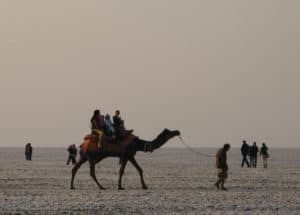 Barbara Mullan: A life with Gujarati textiles - Ansie van der Welt writes about Barbara Mullan's life long affair with Gujarati textiles
Barbara Mullan: A life with Gujarati textiles - Ansie van der Welt writes about Barbara Mullan's life long affair with Gujarati textiles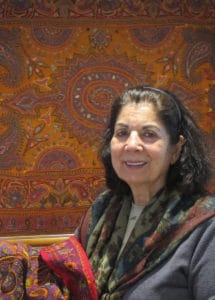 Paisley stands tall again: Akhtar Ismailzadeh’s patteh embroidery - Ansie van der Walt writes about the patteh embroidery of Akhtar Ismailzadeh, an Iranian migrant living in South Australia. The paisley is sometimes inteprets as the cyprus tree which has been bent by the hardships of exile. Akhtar's work corrects this by straightening the paisley again.
Paisley stands tall again: Akhtar Ismailzadeh’s patteh embroidery - Ansie van der Walt writes about the patteh embroidery of Akhtar Ismailzadeh, an Iranian migrant living in South Australia. The paisley is sometimes inteprets as the cyprus tree which has been bent by the hardships of exile. Akhtar's work corrects this by straightening the paisley again.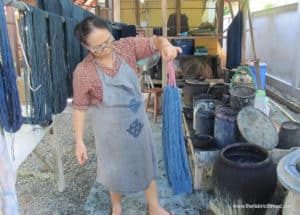 For the love of Lao – Studio Naenna - Ansie van der Walt profiles Patricia Cheesman, the founder of Studio Naenna, a remarkable business that now provides work for weavers from northeast Thailand and Laos. It began when she was charmed by Laotian hospitality.
For the love of Lao – Studio Naenna - Ansie van der Walt profiles Patricia Cheesman, the founder of Studio Naenna, a remarkable business that now provides work for weavers from northeast Thailand and Laos. It began when she was charmed by Laotian hospitality.